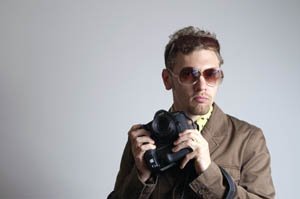 I’m an engineer, which means that although I search for Zen, I am forever bound to the material attraction of gadgets and toys. My camera collection includes a Woca (Holga), Minolta 7, Minolta 7D, Fuji GA645, Contax G1, and my very first digital: the Canon D2000 (Kodak DCS520). The D2000 was the Canon version of a co-development between Kodak and Canon to produce the first real Digital Single Lens Reflex (DSLR) camera. Kodak did the sensor and Canon provided the camera body technology. It’s true, there were predecessors, the Kodak-Nikon did come first with the DCS420, but the digital back and camera body really weren’t integrated, and it didn’t even sport an LCD on the back. The D2000/DCS520 displays integrated digital-camera body technology with a LCD and the large adjustment wheel, which is still standard on every pro-level Canon and even on the top-of-the-line G7. All subsequent pro-level Canons have their routes in the D2000/DCS520.
I’m an engineer, which means that although I search for Zen, I am forever bound to the material attraction of gadgets and toys. My camera collection includes a Woca (Holga), Minolta 7, Minolta 7D, Fuji GA645, Contax G1, and my very first digital: the Canon D2000 (Kodak DCS520). The D2000 was the Canon version of a co-development between Kodak and Canon to produce the first real Digital Single Lens Reflex (DSLR) camera. Kodak did the sensor and Canon provided the camera body technology. It’s true, there were predecessors, the Kodak-Nikon did come first with the DCS420, but the digital back and camera body really weren’t integrated, and it didn’t even sport an LCD on the back. The D2000/DCS520 displays integrated digital-camera body technology with a LCD and the large adjustment wheel, which is still standard on every pro-level Canon and even on the top-of-the-line G7. All subsequent pro-level Canons have their routes in the D2000/DCS520.
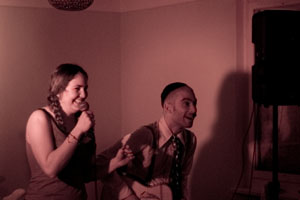 In 1993 the D2000/DCS520 retailed for something on the order of $15,000. Built on the supposedly fantastic Canon 1N film body the D2000 sports a vertical grip, EOS lens mount, first-rate viewfinder and 2 Mega-Pixel APS sensor. Yes, two Mega-Pixels, by modern digital camera marketing number standards this is no better than a crap camera phone. But the keen engineer-gadget-freak looks beyond hollow numbers to the buried beauty inside. The D2000/DCS520 can be found for something like $300-$500 on eBay (depending on what else is included). For my D2000 I picked up the cheap-but-killer-awesome Canon 50 mm f1.7 lens (~$80). With the battery the D2000 is a bit of a brick to hold in the hand. However, there are some cool advantages to owning near 10 year-old pro digital camera technology (from the product research and development time, it may be closer to 20 years old).
In 1993 the D2000/DCS520 retailed for something on the order of $15,000. Built on the supposedly fantastic Canon 1N film body the D2000 sports a vertical grip, EOS lens mount, first-rate viewfinder and 2 Mega-Pixel APS sensor. Yes, two Mega-Pixels, by modern digital camera marketing number standards this is no better than a crap camera phone. But the keen engineer-gadget-freak looks beyond hollow numbers to the buried beauty inside. The D2000/DCS520 can be found for something like $300-$500 on eBay (depending on what else is included). For my D2000 I picked up the cheap-but-killer-awesome Canon 50 mm f1.7 lens (~$80). With the battery the D2000 is a bit of a brick to hold in the hand. However, there are some cool advantages to owning near 10 year-old pro digital camera technology (from the product research and development time, it may be closer to 20 years old).
First off, the view-finder really is awesome. It’s high-quality and bright, very nice for low-light shots, and the focusing screen can be replaced if desired for better manual focusing. Robust and responsive, the D2000 does 3.5 frames per second. The main limitation during use is lighting and exposure, the results above IS0200 start to introduce a lot of noise. On the plus side, the noise is so bad (blue channel) that it’s easy to identify and clean up. When the lighting is bad and high ISO images look like a twisted dream – converting to black and white or playing with the raw image will yield nice results.
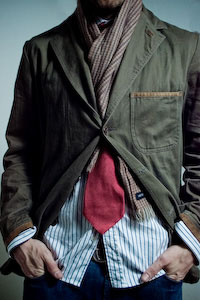 You can shoot in JPEG but I always shoot raw. At 2 Mb per raw file you can enjoy all the raw benefits and not fill up your hard-drive. I love shooting raw with my Minolta 7D, but at 8.1 megs per raw file, the small 60 gig drive on my G4 PowerBook only holds so much. The size of a camera sensor pixel translates to it’s ability to interact with light. So point-and-shoot cameras with high mega-pixel counts and very small pixel sizes produce images which look clean, but generally flat because the sensor pixel size is not large enough to effectively capture the light hitting the sensor (at least this has been my observation). Conversely, multi-ten-thousand dollar medium format digital backs generally render deeper, richer colors, due in part to their larger pixel size. In fact, the keen camera fool might note that the 2 megapixel APS-sized sensor retains a pixel pitch of 11.9 microns. In the age of megapixel marketing driven mania it is interesting to note that this pixel pitch is larger than that of the $2500 Canon 5D, the $16,000 Canon Mark-IIn, or even many of the $25,000 medium format digital backs. If you add a large flash the camera is a tad too big to carry around in normal settings. But when the lighting is right the results can be fantastic. For controlled lighting work, like with off-camera strobes (check out Strobist), the results are smooth and edgy. I like to use the D2000 for it’s unique look – skin tones are not rendered perfectly and missing the exposure results in sub-par images. Due to the high pixel pitch the colors from the 2 MegaByte raw files have a deep quality I don’t see on 35mm film, 6X45 medium format film, my Minolta 7D, or the Nikon D200.
You can shoot in JPEG but I always shoot raw. At 2 Mb per raw file you can enjoy all the raw benefits and not fill up your hard-drive. I love shooting raw with my Minolta 7D, but at 8.1 megs per raw file, the small 60 gig drive on my G4 PowerBook only holds so much. The size of a camera sensor pixel translates to it’s ability to interact with light. So point-and-shoot cameras with high mega-pixel counts and very small pixel sizes produce images which look clean, but generally flat because the sensor pixel size is not large enough to effectively capture the light hitting the sensor (at least this has been my observation). Conversely, multi-ten-thousand dollar medium format digital backs generally render deeper, richer colors, due in part to their larger pixel size. In fact, the keen camera fool might note that the 2 megapixel APS-sized sensor retains a pixel pitch of 11.9 microns. In the age of megapixel marketing driven mania it is interesting to note that this pixel pitch is larger than that of the $2500 Canon 5D, the $16,000 Canon Mark-IIn, or even many of the $25,000 medium format digital backs. If you add a large flash the camera is a tad too big to carry around in normal settings. But when the lighting is right the results can be fantastic. For controlled lighting work, like with off-camera strobes (check out Strobist), the results are smooth and edgy. I like to use the D2000 for it’s unique look – skin tones are not rendered perfectly and missing the exposure results in sub-par images. Due to the high pixel pitch the colors from the 2 MegaByte raw files have a deep quality I don’t see on 35mm film, 6X45 medium format film, my Minolta 7D, or the Nikon D200.
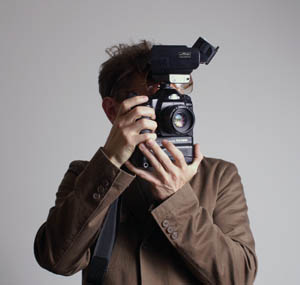
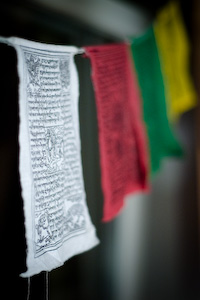
Much spunk is made about digital camera file support, and the fear that your photos won’t be readable by future computer applications. So it actually pretty cool that Adobe Lightroom and Camera Raw both fully support D2000 raw images and produce fantastic image conversions. Much spunk is also made about camera companies going under and no new lenses will be sold, like the Minolta – now Sony line with a very limited buyable lens range, or Contax (which went under), but the D2000/DCS520 takes any EOS lens – from the $1500 24mm L to the the 70-200mm IS L. I recommend the normal primes, the 28mm, 35mm, 50mm or 85mm. And since it’s a Canon EOS mount, it can take a number of lenses from Leica, Contax, Nikon, Pentax and others via the proper adapter.
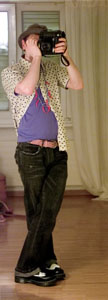 Plus, and this is important, the D2000 is a killer party camera – maybe not so much for the club night or bar hop, it’s too big for those gigs. However, the D2000 is awesome in a festive setting and works best at costume affairs or dinner parties. It just looks cool to carry a large camera around these circles. If it’s a costume party and you go with a Hunter S. Thompson theme, the Canon D2000 will no doubt boost your Gonzo-reporter flare. I reviewed the limitations of the D2000/DCS520 before buying it, and the purpose in doing so was mainly as a learning camera. It has all the features of a pro-body, but with a learning curve which guarantees you’ll gain a unique education in digital photography. But after using it on and off for two years I have to say I prefer it in some situations due to the limitations which, like those of a Holga, I’ve become quite fond of. Further reading at Dpreview and Shutterbug
Plus, and this is important, the D2000 is a killer party camera – maybe not so much for the club night or bar hop, it’s too big for those gigs. However, the D2000 is awesome in a festive setting and works best at costume affairs or dinner parties. It just looks cool to carry a large camera around these circles. If it’s a costume party and you go with a Hunter S. Thompson theme, the Canon D2000 will no doubt boost your Gonzo-reporter flare. I reviewed the limitations of the D2000/DCS520 before buying it, and the purpose in doing so was mainly as a learning camera. It has all the features of a pro-body, but with a learning curve which guarantees you’ll gain a unique education in digital photography. But after using it on and off for two years I have to say I prefer it in some situations due to the limitations which, like those of a Holga, I’ve become quite fond of. Further reading at Dpreview and Shutterbug